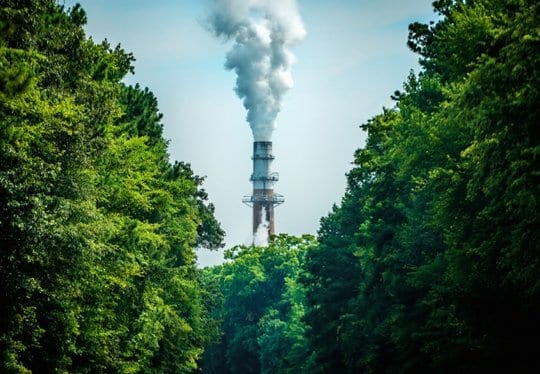Fossil fuel demand is expected to peak sometime in the 2020s according to a new report from think-tank Carbon Tracker, which predicts that the rapid growth of clean technologies like wind and solar will cause fossil fuel demand to plummet, risking trillions for unwary and ignorant investors.
A new report from Carbon Tracker, 2020 Vision: Why You Should See Peak Fossil Fuels Coming, shows that with global energy demand expected to grow at between 1% and 1.5% per year, and wind and solar to grow at between 15% to 20% per year, fossil fuel demand will peak sometime between 2020 and 2027, most likely in 2023.
“The 2020s will be the decade of fossil fuel demand peaks, as one bastion after another is stormed and overwhelmed by the rising renewable tide,” explained Kingsmill Bond, Carbon Tracker New Energy Strategist and author of the report. “This will inevitably lead to trillions of dollars of stranded assets across the corporate sector and hit petro-states that fail to reinvent themselves.”
The report identifies several factors driving the demand for clean energy and the dip in demand for fossil fuels, including the fact that “the cost of renewables and battery storage is falling fast, emerging economies are pursuing clean energy, and governmental policy is being driven by the need to slash emissions, control climate change and reduce air pollution.”
Key among the findings of the report is the fact that as emerging markets begin to account for all energy demand growth in years to come, it is unlikely that they will follow the traditional fossil fuel path and will instead look to cheaper, more efficient renewable energy technologies to foster not only energy security, but also to support innovation and job growth in tandem with expanding populations and economies.
For Carbon Tracker, they see the 21st Century divided up into four key phases that outline the growth of the energy transition – 2000 to 2020 was the innovation phase; 2020 to 2030 will be the peaking phase; 2030 to 2050 will be the phase of rapid change; and 2050 through to the end of the century will be the endgame.
“Fossil fuel demand has been growing for 200 years, but is about to enter structural decline,” said Kingsmill Bond. “Entire sectors will struggle to make this transition. They can expect price declines, greater competition, restructuring, stranded assets and market derating.”
Without acknowledging the likely peak of fossil fuel demand through the next decade, and continuing business as normal, the impact of this energy transition, therefore, could be “colossal”:
.The fossil fuel sector has invested an estimated $25 trillion in infrastructure and there will be systemic risk to financial markets as they seek to digest vast amounts of stranded assets.
.The transition will directly affect companies that compose up to a quarter of equity indexes and debt markets, hitting banking, capital goods, transport and automotive sectors.
.Fossil fuel exporting countries will suffer. Russia is one of 12 countries where fossil fuel rents account for 10% or more of GDP.
“Investors anticipate, so they will typically react even before companies see peak demand,” said Kingsmill Bond. “This is what happened recently in the coal and European electricity sector transitions. We believe that investors will start to react faster as the energy transition works its way through the world’s capital markets. As each sector is impacted, it becomes easier for the market to anticipate something similar happen










